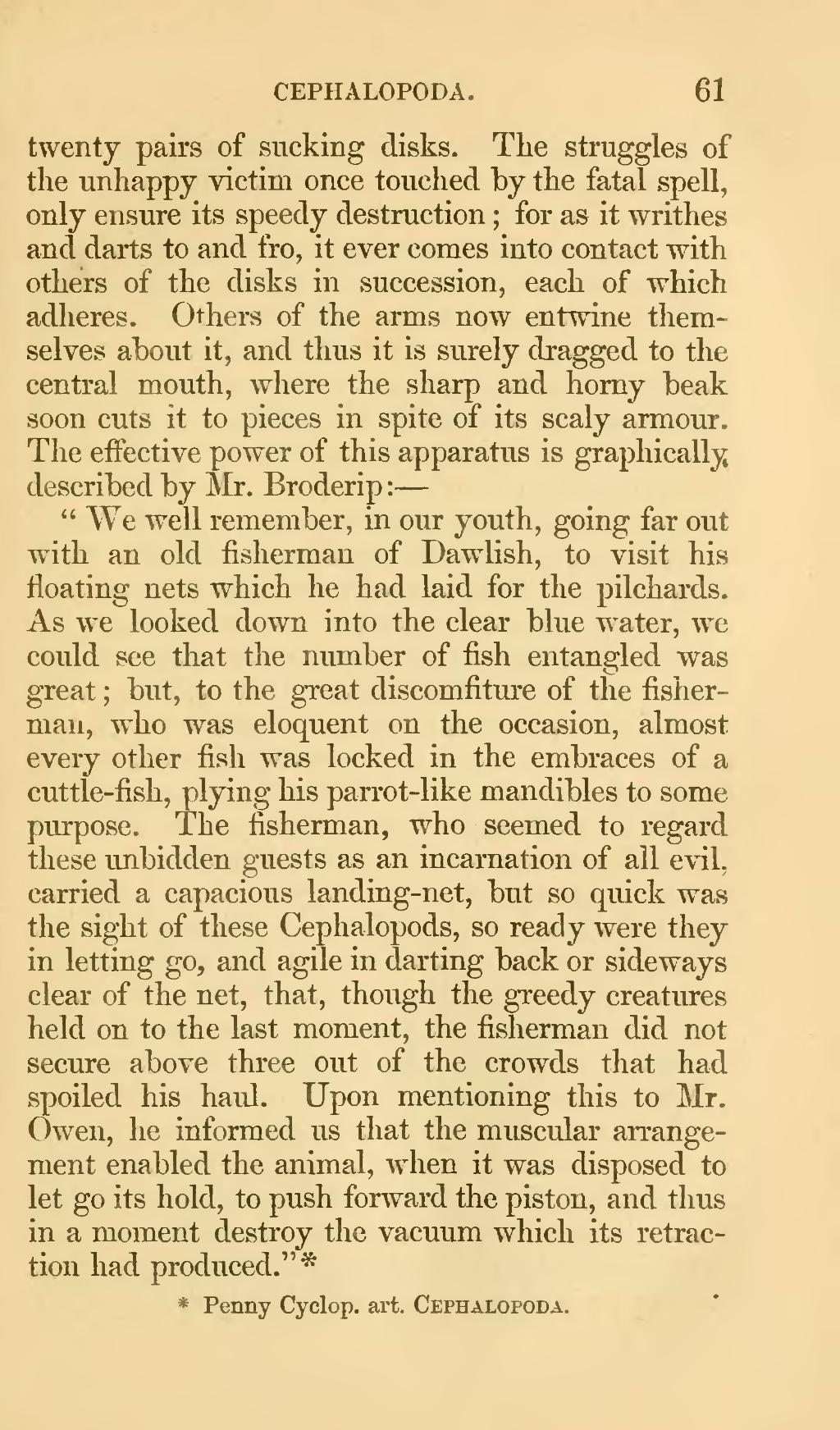twenty pairs of sucking disks. The struggles of the unhappy victim once touched by the fatal spell, only ensure its speedy destruction; for as it writhes and darts to and fro, it ever comes into contact with others of the disks in succession, each of which adheres. Others of the arms now entwine themselves about it, and thus it is surely dragged to the central mouth, where the sharp and horny beak soon cuts it to pieces in spite of its scaly armour. The effective power of this apparatus is graphically described by Mr. Broderip:—
"We well remember, in our youth, going far out with an old fisherman of Dawlish, to visit his floating nets which he had laid for the pilchards. As we looked down into the clear blue water, we could see that the number of fish entangled was great; but, to the great discomfiture of the fisherman, who was eloquent on the occasion, almost every other fish was locked in the embraces of a cuttle-fish, plying his parrot-like mandibles to some purpose. The fisherman, who seemed to regard these unbidden guests as an incarnation of all evil, carried a capacious landing-net, but so quick was the sight of these Cephalopods, so ready were they in letting go, and agile in darting back or sideways clear of the net, that, though the greedy creatures held on to the last moment, the fisherman did not secure above three out of the crowds that had spoiled his haul. Upon mentioning this to Mr. Owen, he informed us that the muscular arrangement enabled the animal, when it was disposed to let go its hold, to push forward the piston, and thus in a moment destroy the vacuum which its retraction had produced."[1]
- ↑ Penny Cyclop. art. Cephalopoda.
